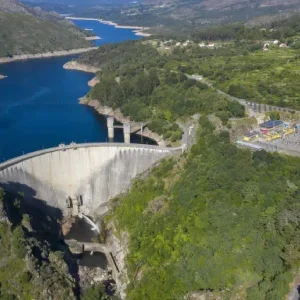
Among carbon capture and storage projects hoping to obtain funding, as part of the European Union’s CCS Demonstration Programme, from the New Entrants Reserve under the EU’s revised Emissions Trading Scheme is FINNCAP – a proposed CCS demonstration project planned at the 565 MW Meri-Pori coal fired plant (pictured above), at Pori, on the west coast of Finland.The selection for this funding is expected to take place in 2011 and the final investment decision would be made in 2011-2012, with the project aiming to be in operation by 2015.
A distinguishing feature of the FINNCAP project, which last year applied for funding under another EU scheme, the European Energy Programme for Recovery (EEPR), but was not one of the chosen six, is that carbon dioxide transport would be by ship (rather than pipeline).
Accordingly, the Finnish utilities spearheading the project, Fortum and Teollisuuden Voima (TVO), joint owners of Meri-Pori, have entered into a co-operation agreement with Maersk Tankers, with the aim of using that company’s vessels for transport. In addition they have an agreement with Maersk Oil (which like Maersk Tankers is part of the Danish A.P. Moller – Maersk Group) under which Maersk Oil will investigate the possibility of providing final carbon dioxide storage in the depleting oil and gas fields of the Danish North Sea, as well as the potential use of CO2 for enhanced oil recovery (EOR).
The aim is to capture, transport and store in excess of 1.2 million tonnes CO2 per year. The planned CCS demonstration project would process about 50% of the plant’s flue gas and capture 90% of the CO2 it contains. It is among the largest post-combustion capture projects yet announced in Europe, and the first to combine shipping, cross border transportation between two EU countries and enhanced oil recovery options.
“Shipping CO2 in tanker vessels is a cost efficient and flexible way to get CO2 from power plants to offshore storage sites, which makes it a suitable solution for large CO2 emission sources such as coal-fired power plants, especially in the emerging phase of CCS,” says Søren Skou, chief executive officer of Maersk Tankers and member of the A.P. Moller – Maersk Group’s executive board.
Maersk Tankers already has the blueprints to build tanker vessels for the transport of CO2 from emission sources to storage sites. The vessels will be semi-pressurised and semi-refrigerated, keeping the CO2 liquid. Maersk Tankers has designed the vessels, based on its experience with transport of liquefied petrochemicals and natural gas.
The post combustion capture concept to be used in the proposed Meri-Pori CCS project is Siemens’ amino-acid salt technology, as announced in October last year. Several major prospective capture technology suppliers competed but the Siemens technology, which can be categorised as a “second generation” capture process, was judged to be “especially promising in terms of energy efficiency” according to Tapio Kuula, president and CEO of Fortum. Total energy loss due to capture and liquefaction in the case of Meri-Pori is estimated at 5% points (65 MW). The amino acid solvent is also environmentally friendly.
The development of the amino-acid salt post-combustion capture technology has been funded by the German Federal Ministry of Economics and Technology and is part of the COORETEC initiative. Its adoption at Meri-Pori provides an important opportunity to scale up the concept to commercial scale.






